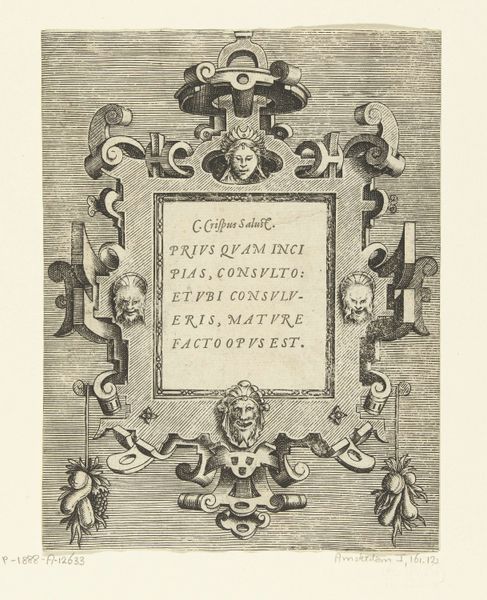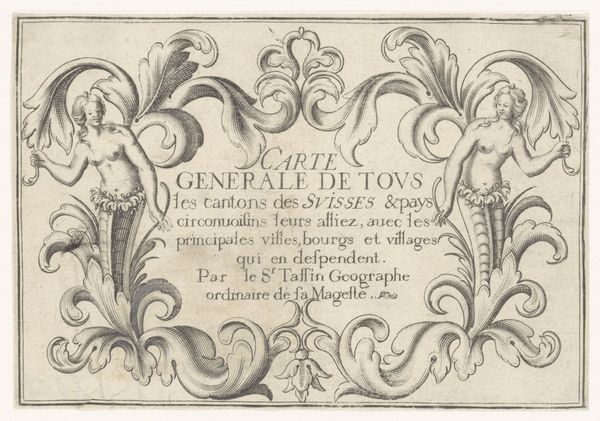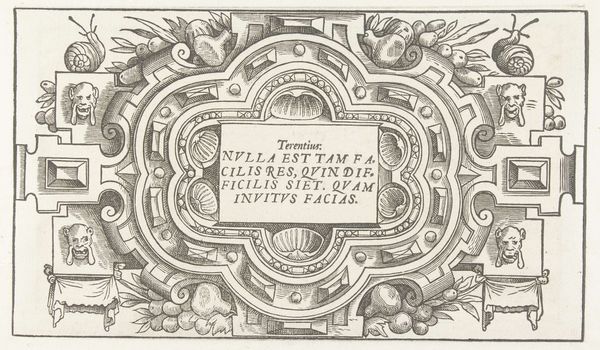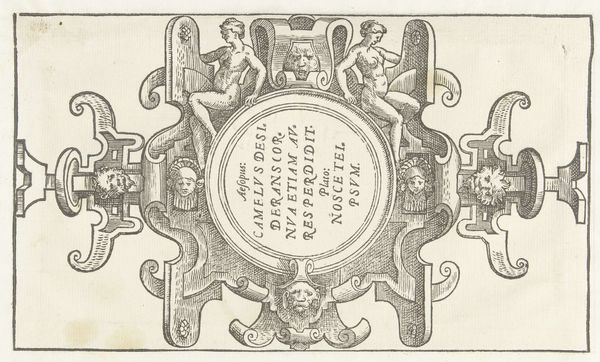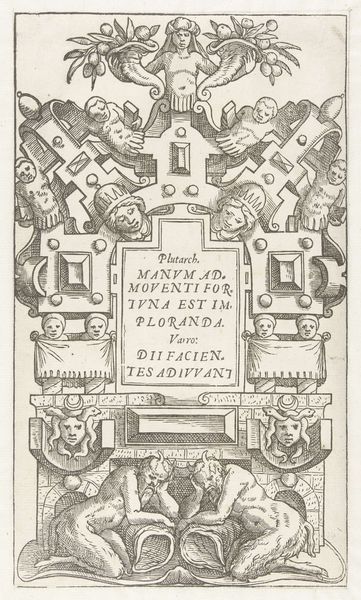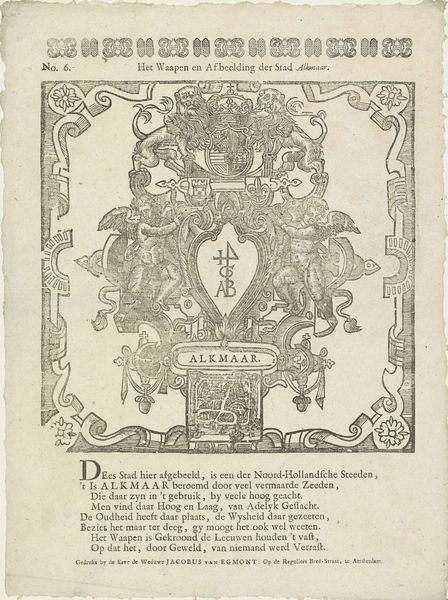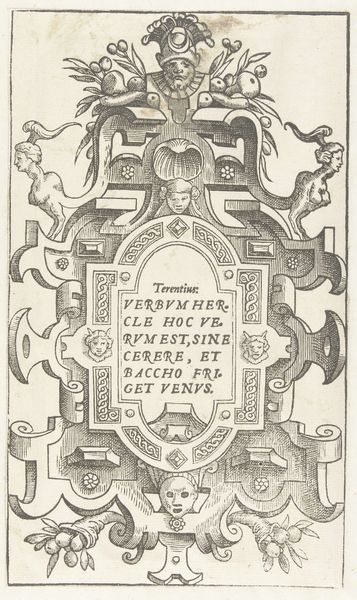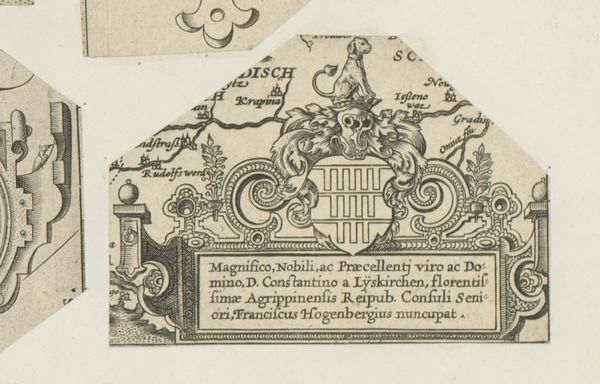
drawing, print, ink, pen, engraving
#
drawing
#
pen drawing
# print
#
ink line art
#
11_renaissance
#
ink
#
pen
#
northern-renaissance
#
decorative-art
#
engraving
Dimensions: height 137 mm, width 237 mm
Copyright: Rijks Museum: Open Domain
Editor: Here we have what appears to be a print titled "Cartouche met een citaat van Publilius Syrus?", created around 1556 by an anonymous artist. It looks like an engraving in ink. It reminds me of a frame that might surround a text or small painting, and it has a somewhat whimsical, decorative quality. What's your take on it? Curator: That's a good initial reading. This piece reflects the Northern Renaissance fascination with classical antiquity, filtering it through a distinctly early modern lens. Notice the quotation from Publilius Syrus; this inscription anchors the work in the humanist revival of classical wisdom. But also observe how that wisdom is presented: encased within a decorative structure populated with grotesque masks, animals, and swags. Does this juxtaposition tell us anything? Editor: I guess it says something about how classical learning was being received and re-contextualized? Curator: Precisely! Prints like these weren’t just aesthetic objects. They played a vital role in disseminating knowledge and shaping cultural values. The elaborate framework competes with the text, right? Editor: It definitely seems to. All those classical faces seem at odds with those quirky goat things. I hadn’t considered the distribution of knowledge so directly before. Curator: Consider that the relatively democratic nature of print made knowledge more accessible to wider audiences, subtly shifting power structures. This particular image likely served as a template or inspiration for other artworks or decorative schemes, further amplifying its impact. Were you aware of this social element of art prints? Editor: Not really, but thinking about how knowledge spread and power shifted helps me see it in a new way. It makes the print feel very alive! Curator: Exactly! The public role of art shifts how we look at even small decorative works like this.
Comments
No comments
Be the first to comment and join the conversation on the ultimate creative platform.
